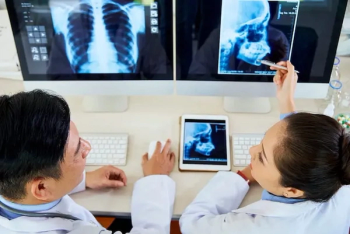
Report from SIIM: ‘Big brother’ program taps PACS to find radiologists
Researchers at Staten Island University Hospital have developed a program that uses PACS log file data to help find radiologists at the click of a button.
Researchers at Staten Island University Hospital have developed a program that uses PACS log file data to help find radiologists at the click of a button.
The "find my radiologist" program was one of a host of features intended to smooth radiology operations at the hospital. But the radiologist tracker, also known as the "big brother" feature, has quickly become a controversial yet popular function, said Dr. Jason DiPoce, who presented a study at the Society of Imaging Informatics in Medicine meeting last week.
"Some people like it, some people don't. But the bottom line is that everyone uses it," DiPoce said.
PACS log files track when studies are entered into the system, who is working on them, and when the reading was performed. As supplied by most PACS vendors, the log files are troublesome. They tend to be lengthy, complex, and difficult to use and access. They don't provide real-time data.
To solve this problem, the authors wrote a program to capture the audit information of their PACS directly into a Microsoft SQL server database and made it accessible through web-based query tools. In the case of radiologist tracker, the program provides radiologists' names, where they were when they last worked on a study, and phone numbers where they can be reached.
Most radiologists like this new approach because they can use it to find each other, said Dr. David Hirschorn, a coauthor of the paper. It also helps because radiologists at the hospital are widely distributed, with some at an outpatient center and some working at home.
"When you're at work, we should know how to reach you," he said.
This information from the log file can be used not only to monitor the productivity of technologists and radiologists but also to investigate medical errors, according to the paper's abstract. It can also reveal when an exam with significant findings was first acquired, when it was first viewed, and by whom.
"It allows us to not only prepare activity reports in advance of an investigative meeting, but also to answer new questions that come up during the meeting immediately," the authors said. "Rather than having to say, ‘I'll run a report and get back to you later this week,' we can say, ‘Let's look right now,' because all of the data are up to date and immediately queryable."
Newsletter
Stay at the forefront of radiology with the Diagnostic Imaging newsletter, delivering the latest news, clinical insights, and imaging advancements for today’s radiologists.




